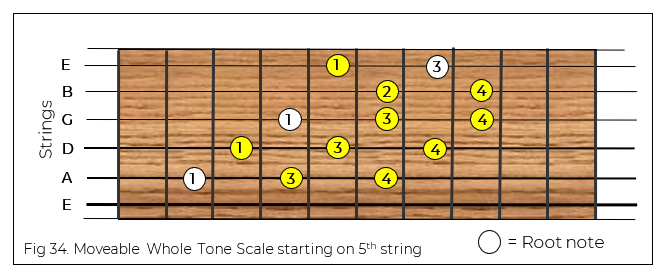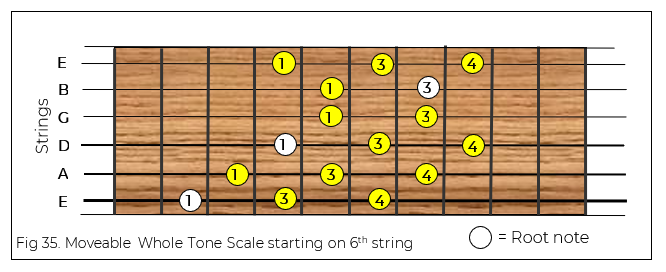As the name implies, this scale is a scale based entirely on whole-tone intervals. So all notes in this scale will have an interval of 1 tone between them.
So, in the key of A, we will get the following notes:
| tone | tone | tone | tone | tone | tone | ||||||||
| A | ^ | B | ^ | C# | ^ | D# | ^ | F | ^ | G | ^ | A | |
| Frets: | 2 | 2 | 2 | 2 | 2 | 2 |
Listen:
FINGERING FOR ROOT NOTE ON 5TH STRING:
This pattern can be used when the root note of the natural minor scale falls anywhere on the 5th string.

FINGERING FOR ROOT NOTE ON 6TH STRING:
This pattern can be used when the root note of the natural minor scale falls anywhere on the 6th string.

This scale is used in classical music and some styles of jazz, and is useful for improvisation work. Debussy used this scale in many of his works, for a few measures at a time, to add a different tonal colour to the arrangement.
Specifically, this scale works very well in improvisation over any dominant or augmented dominant chord (see section on Harmony).